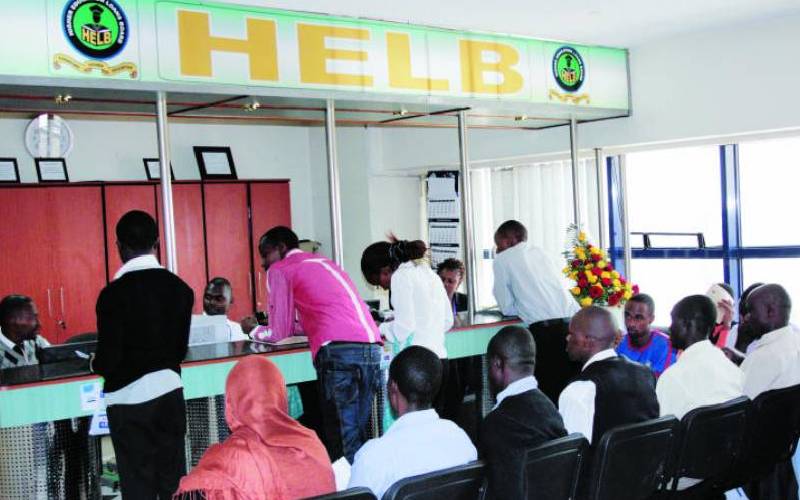How varsity, college students will receive various funding
By Irene.Githinji and Seth Mwaniki, August 15, 2023The government has assured the Means Testing Instrument (MTI), a scientific model used to allocate tuition funds to students in universities and tertiary colleges, will continue to apply under the new framework.
Besides the allocation of tuition funds, MTI will also be used to determine the upkeep loan amount for four categories of students namely vulnerable, extremely needy, needy and less needy.
Higher Education Loans Board (HELB) Chief Executive Charles Ringera explained that MTI is a model designed to determine the students’ level of need based on several parameters including family economic background, affirmative action, socio demographic data and family education expenditure.”
“The loans were always given through the four categories but scholarships were not. Now we are saying that both the loan and scholarships will go through the four categories,” said Ringera, in a media workshop on university funding.
He also said that upkeep has been provided for, with the vulnerable expected to get Sh60,000 up from Sh42,000 while the less needy who used to receive Sh37,000 will now receive Sh45,000.
“The component of upkeep for students is very low and we had to get an intervention of how we can be able to increase that to an average of Sh42,000 so that we can stop the Mama Osha business,” he explained.
Ringera said that in universities, vulnerable students will get a tuition scholarship of 82 per cent, tuition loan of 18 per cent and Sh60,000 upkeep loan amount.
The extremely needy students are expected to get a tuition scholarship and loan of 70 per cent and 30 per cent respectively and an upkeep loan amount of Sh55,000.
Underage students
For the needy, it will be tuition scholarship and loan of 53 per cent and 40 per cent respectively and Sh50,000 as upkeep loan while the less needy they are expected to receive 38 per cent and 55 per cent tuition scholarship and loan respectively and Sh45,000 as loan upkeep.
He said at least 29 per cent of the people who apply for funding will walk to the universities cost free on their household because they will be fully funded by Government.
“The universities funding model has been the biggest animal we have been trying to arrest and cure. Last year, we funded only 24 per cent of the loan applicants because of the budget,” he said.
Ringera has indicated that at least Sh210 billion will be required for university financing by 2028 under the new student-centered model.
He said the loan component will require at least Sh145 billion while scholarship will need at least Sh75 billion.
“Small simulation numbers that we have done shows that by, 2028 through this model university financing will require Sh145 billion from loans only. Scholarships will be looking at another around Sh75 billion so we are talking about Sh210 billion as the amount that will be required,” said Ringera.
He also said that all underage students will be awarded scholarships as they wait for loan awards when they attain 18 years.
For the loan, a student must have an ID because it is a contract and as at this placement, KUCCPS gave HELB data of about 2,000 below 18 at that time.
“As months go by, most of them have been acquiring IDs so they will still use their birth certificates and index numbers to register on the portal, they will be categorized and money will be allocated to them,” he explained.
And added: “Scholarship will be released because that is going to schools and the loan will wait, including the upkeep one until the IDs come out but it will be reserved money for them. Once the ID is produced, they will get their money.”
The government will avail both scholarships and loans for 130,485 students in public universities and 9,662 in private universities will get loans only while Muslim students will get scholarships.
Universities Fund Chief Executive Officer, Geoffrey Monari explained the process of higher education financing saying it starts with student applications, verification of documents followed by allocation and then disbursement.
Students have until August 27 to apply for funding and then it will take at least a week to verify after the deadline and allocation done within three days after verification.
Requirements
Among the student requirements to apply include a valid email address, a valid telephone number registered with the student’s name to apply for the loan, KCPE and KCSE index numbers and year of exam, birth certificate, two guarantors ID and phone numbers for loan application.
A copy of the sponsorship letter if the student was sponsored in secondary school will also be required. “This is important to verify if you were supported because we realise there are some students who go to private schools but they are supported by certain foundations. That is why we are saying it does not mean that if you went to a private school it is automatic you will not get loans and scholarship and that is why you are asked for this information,” Monari explained.
He also explained that the cost of programmes will not change because universities have already signed Memorandum of Understanding (MoUs) based on the fees they will be charging.
“If they increase the fee, that agreement will be invoked and we will be able to take action on them,” he explained.
